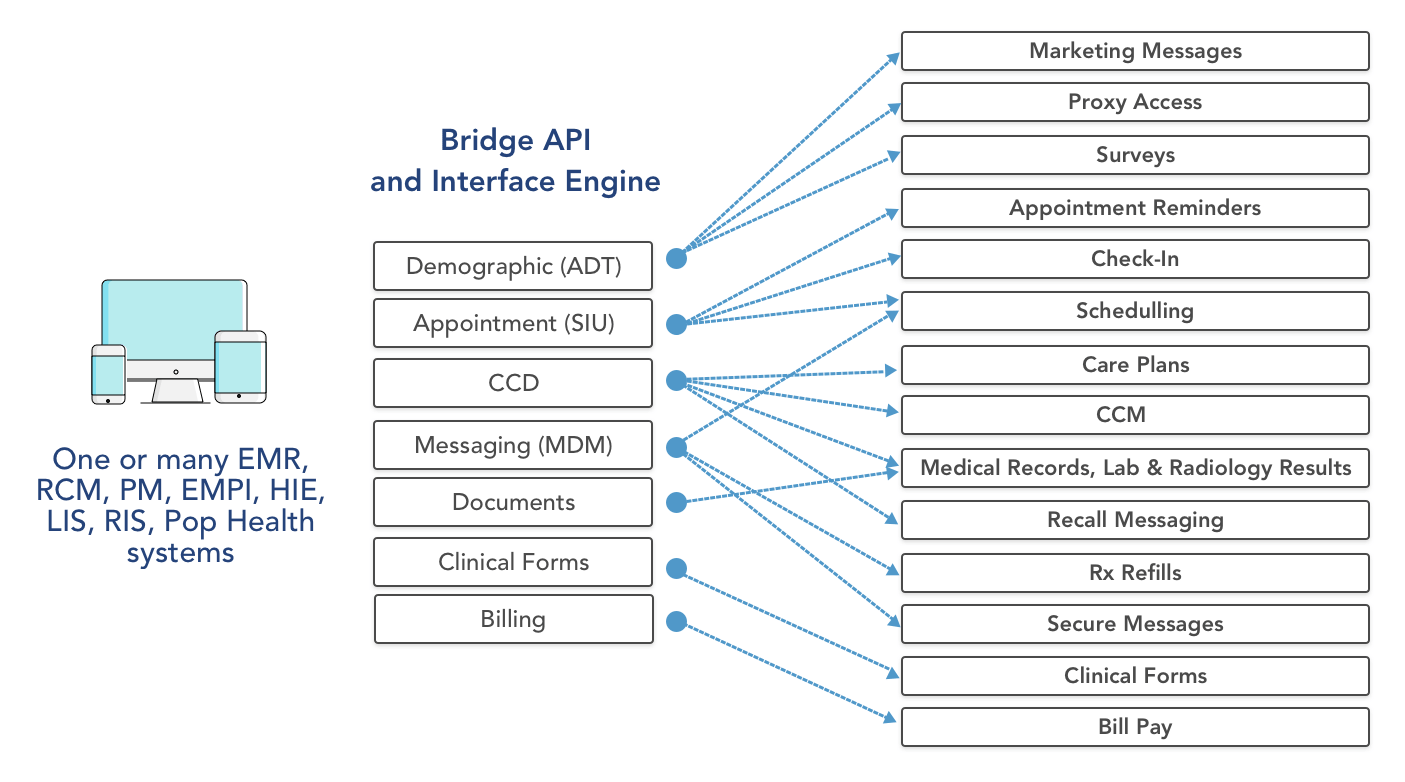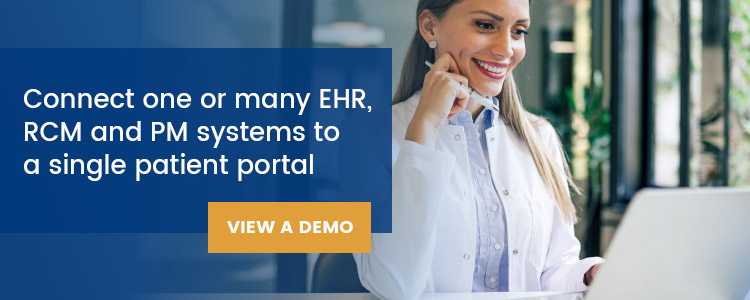How Bridge Improves Patient Engagement In Greenway Health™
- Blake Rodocker
- June 05, 2017

Updated on June 21, 2020.
Greenway Health™ provides electronic health records (EHR), practice management (PM), and revenue cycle services (RCS) for ambulatory clinics and various specialty practices.
Greenway Health™ users frequently come to Bridge seeking a solution to increase patient engagement in their healthcare organizations. Bridge offers an industry-leading user experience through its patient-centric design, mobile app, and robust EHR/PM interfaces. Some of the more common reasons to switch to Bridge’s patient engagement solution include:
- Cumbersome patient registration
- Lack of robust messaging functionality
- Lack of customizability
Bridge offers multiple methods by which patients can sign up for a portal account, making patient registration easier. These include:
- In-office registration: Patients can sign up at the front desk, before or after their visit.
- Patient portal self-registration: Patients can create an account on their own, at home, or at work.
Bridge helps engage patients with its omnichannel messaging solution (SMS text, email, push) so healthcare organizations can leverage a single patient messaging software that knows and respects patient communication preferences across channels.
Bridge offers a vendor-neutral patient portal and patient engagement solution, which can connect with any interfaceable EHR, RCM, or PM software system, including Greenway Health™. In cases where Greenway Health™ is used alongside other EHR and or PM vendors, Bridge can provide a single patient portal and client-branded mobile app which connects these disparate source systems. This provides patients with a “single pane of glass” or “front door” to access important self-service tools via their web browser or through a published iOS or Android mobile app.
Common EHR pain points:
- Inadequate customizability
- Deficient interoperability in multi-EHR environments
- Lack of control over the information sent through a portal, (e.g., sensitive lab results, incomplete progress notes or age-restricted information)
- No client-branded mobile app for iOS and or Android
Avoid Piecemealed Patient Engagement Software
Many healthcare organizations leverage numerous third-party patient engagement software vendors to “piece together” a suite of self-service tools for their patients. Some of the more common “one-off” patient engagement tools include:
| Common one-off patient engagement tools | Examples |
| Patient portal software | EZ Access™, Medfusion™, Intelichart™ |
| Appointment reminder software | 10to8 ™, SimplyBook.me™ |
| Patient scheduling software | Odoro™, ZocDoc™ |
| Patient intake software | Phreesia™ |
| Telemedicine software | SnapMD™, Doxy.me™, Zoom™ |
| Patient survey software | Patientlink™, Zonka™ |
| Patient messaging software | Relatient™, Luma™ |
| Mobile access via a mobile app solution | FollowMyHealth® |
Bridge offers a single patient engagement solution that offers most of the functionality offered in the above-listed systems, helping healthcare organizations build a strong foundation for reaching their patient engagement goals. Purchasing “one-off,” “piecemealed” solutions can result in the following issues:
- High interface development/maintenance costs
- Expensive license and utilization fees
- Inability to respect patient communication preferences
- The need for patients to remember multiple usernames and passwords
How Bridge Improves Interoperability
Bridge increases interoperability by working with the most prevalent healthcare interface industry standards, including Health Level Seven (HL7), Continuity of Care Document (CCD), and Fast Healthcare Interoperability Resources (FHIR®) via Bridge’s robust and fully-documented healthcare API. Bridge can also build custom, non-standard interfaces designed for advanced integration between multiple systems where external compatibility support is not required.

Bridge improves interoperability by enabling you to share data with disparate clinical and financial systems, providing interfaces when and where you need them. Below is a list of our interface capabilities.
Bidirectional
- Registration & demographics
- Secure messaging
- CCDA
- Bill pay
- Appointment self-scheduling & cancellation
- Prescriptive refills
- Documents
- Patient-caregiver/proxy relationships
Unidirectional
- Patient forms (Portal to EHR/PM/RCM)
DISCLAIMER: All product and company names are trademarks™ or registered® trademarks of their respective holders. Bridge Patient Portal is not affiliated, endorsed, or sponsored in any way to the service providers mentioned in this article.
